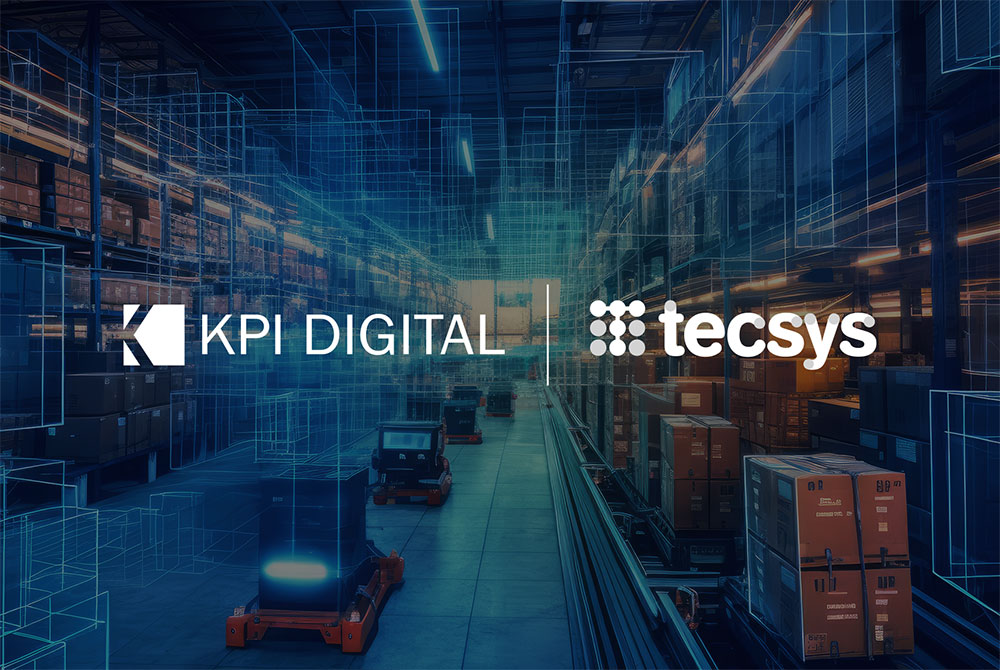Hear us out: You can turn disruptive change into a source of untapped opportunity. You can also capture and leverage innovation as the engine for change. Disruption is occurring all around us at dizzying speed, and companies that fail to address and adapt quickly risk profound challenges. The good news is that identifying and addressing the disruptions that are likely to lead to vulnerability can also motivate organizations to radically innovate.
In March 2022, KPI Digital held the first in a series of innovation-focused virtual panel events, titled Disruption as a Trigger for Innovation, hosted by Nicole Whittle, Vice President of Application Development at KPI Digital. She facilitated a fascinating conversation between expert panelists, highlighting the trends and disruptive forces that decision-making and business cases need, as well as best practices around the methodologies and tools used to harness ideas and track progress. The panelists examined how to measure innovation success, explored inevitable realities, roadblocks, and challenges, and assessed how to mitigate risk.
Read on to learn about key questions you should be thinking about related to innovation and examine the different perspectives and experiences of leading innovation experts.
Which trends and disruptive forces are driving the business case for innovation?
An important secondary question here is: How do you make sure that what you are doing is truly fixing a problem? The answer is simple. The first step is to trace back to the challenges and problems that your team members and customers are facing, and then ensure that any innovation you are planning on incorporating is directed towards fixing a real problem. Nastaran Bisheban, Chief Technology Officer at KFC Canada and one of the innovation panelists, explained: “The root cause of all the innovation is coming from fixing a real problem and real issue in the field and with the customer.”
How can we learn about – and then leverage – customers’ needs to foster innovation?
David Willows, Executive Vice President of Digital Innovation and Brand Experience at Green Shield Canada and event panelist, explained that his company increased their external lens. Green Shield Canada created a panel of customers that they go to quite frequently with both ideas and marketing plans. He explained that they were in market in the last month to about 4,000 Canadians, both GSE clients and just general consumers, talking about virtual healthcare, and offering a 35-minute survey with about 100 questions in there. “We just listen a lot more,” Willows explained, “and, I think, better than we used to about what potential consumers might think.”
As for leveraging that information for innovation, Willows explains that there are a lot of talkers out there. What is rarer is people that can plan, execute, and finish a project. It may sound simple, but he says it is hard. “We are absolutely ruthless about our project planning, about our budgets,” he explains. “We can’t justify and certainly sit in front of a board of directors and say, we’re going to spend this many millions of dollars on new technology to bring these virtual healthcare providers together and not say it’s going to bring a return to the company.”
How can we foster creativity and innovation from team members, and collect those ideas?
Some of the most impactful innovations can come from within our own company’s ecosystem. Bisheban explains that the key to fostering that creativity internally is ensuring that team members are comfortable with the word innovation – that it doesn’t feel intimidating. Innovation does not have to be rocket science. “It doesn’t necessarily mean building this flashy, big and different looking technology.” Bisheban explains. “Innovation is the root of our day-to-day work. If one of the developers can write a code that is self-healing and can understand the bugs and correct itself, that’s innovation. If a release manager can build a release train that can go without any specific changes, but gives the test cases to go forward, that’s innovation.”
In terms of how to collect ideas beyond corporate and from within the broader organization, Bisheban says that they use the pool principle. “We actually go after them and ask questions.” Team members don’t have to worry about taking that initiative and remembering to report ideas: “We involve them and send continuous surveys.” She elaborated that how the survey questions are worded is crucial. They aren’t just “have you been happy with what you have?” but rather, “what could be different for you to be feeling better?” A genuine culture of curiosity goes a long way – an openness to honest feedback breeds innovative ideas.
How do you measure innovation success?
Every industry, and every company, will have their own priorities and goals around success. As a result, no two companies measure or define success in exactly the same way. There is also the question of, what areas do you measure? Bisheban, for one, says that there is no area that her company chooses not to measure. “If you don’t measure, there is no way you can know if you’re doing well or not.” She explains that measurement results are always factored into an execution decision. “If we are doing something, it’s because somewhere, some measurement is telling us that this needs to be done.” This doesn’t mean that they get bottlenecked by an in-depth analysis that prevents taking action on the result of measurement, but measurement is absolutely needed. How to utilize that measurement is subsequently assessed.
Bisheban continued, explaining that success is not simply measured financially. “It’s not all about the green dollar,” she explains. “Green dollar is only one of many factors. Many brown dollars exist.” Companies often don’t pay attention to the frustration of their customer, the frustrations of the employees, or the efficiency of their work. Bisheban explains, if a team member has been able to respond to 10 customers per second, just hypothetically, what does that speed cost the employee? Did that mean they’re not taking their break? Did they have to push their other work to off-hours in order to attain that speed? Those are all the areas that are going to impact the sustainability of the future of the work.
“That sustainability is so important that it can actually trump all the other benefits that we got,” she explains. If you have an amazing thing that wows everyone, but you cannot support, sustain and grow it for a longer period, then what’s the point? Those are the hidden measurements and KPIs that are very easy to overlook. “We are trying to be smart enough to go after those measurements, and put them side-by-side with actual financial green dollars. We definitely do need the financial element to feed the rest of the work that we are doing, but without sustainability, it’s not the best usage of our green dollar.”
How did the pandemic breed innovation?
The pandemic was an unexpected disruptor to most industries, but it also fueled creativity and innovation – which was sometimes necessary in order to survive. Being presented with an “innovate or die” scenario can be quite the impactful motivator.
Panelist Dany Meloul, General Manager of Television at Radio Canada, credits her company’s ability to adapt and meet the needs of their audiences to enhance customer experience as their greatest strength. This was invaluable in her industry once the pandemic hit. She explained: “During the pandemic, we saw that people are home, restaurants are closed, and we’re cooking more.” The result? “We launched an app called Mordu… It’s short content, how-to tips and lots of recipes. We’re building a robust platform with over 5,000 recipes at this point. Who would have thought that the public broadcaster would be in the recipe business?”
How should you handle change management while implementing innovative changes?
Change is tough for many people. It’s easy to get set in your ways and feel comfortable with what’s familiar. Creating a culture where employees don’t feel distraught amidst innovation and change is challenging. Meloul explains, “It’s all about communication. I would say, you need to communicate and make people understand why you’re going in a certain direction. And you have to create adherence with the teams.” She explains how leadership plays a key role in change management: “It’s not our project to lead alone as leaders. It’s a team that’s leading the project together. So, they must be behind it and understand why we want to do things a certain way.” She also says that transparency and humility are crucial at every step. “If we’ve tripped, you say it. You say that we’ve made a mistake, we’re taking a step back to move forward. That’s really, really important.”
Bisheban agrees: “The human side goes above any process and technology that comes into this ecosystem. There’s this funny saying that goes, ‘No one likes a change except an infant in a wet diaper.’ Change is not comfortable, no one likes it, and everyone resists it in a different way, with a different kind of outcome. So, it is key to manage it properly, and be thoughtful about how we bring people along with us as these changes are happening. This can’t happen after the fact. You can’t say: ‘Here, this is your system, go and use it.’”
Is simplicity the best type of innovation?
The most impactful and successful innovations have been painfully simple. So simple, they had you thinking Why didn’t I think of that? Bisheban uses Amazon as a perfect example of this. “While everyone was trying to find out how they can make sure that every click is more efficient, Amazon changed everything through one click. So as opposed to making sure that all the steps are working well, they went ahead and said, ‘Everything is going to be behind the scenes. You just have one click,’ and well, we all know where our money is going on online shopping. This is thanks to simplicity. This is brilliant.” She explains that the behavioral economy needs to be hand in hand with the business. We need to think about creating technology that serves our consumers or users in a way that has the least amount of friction possible.
This is in line with what KPI Digital’s president, Benny Cohen, always says about frictionless apps: “Remove the noise. Get anything out of the way that people don’t need to deal with.”





